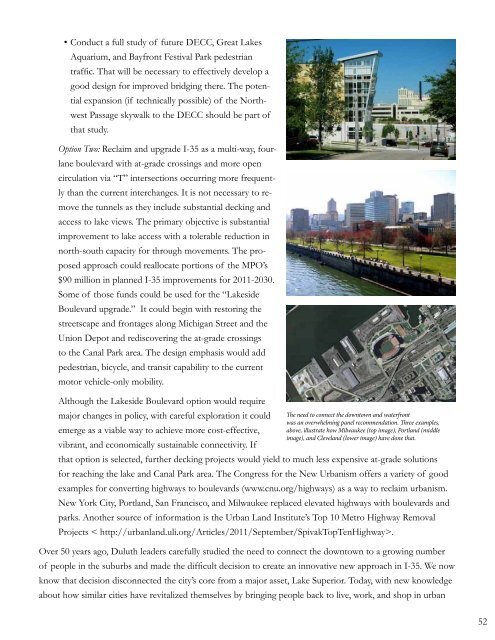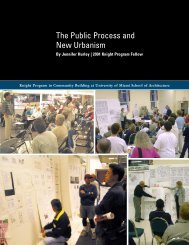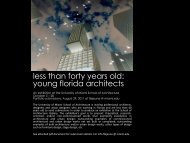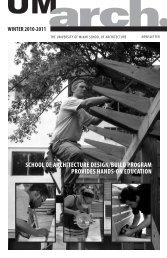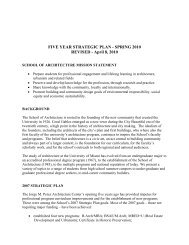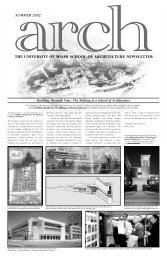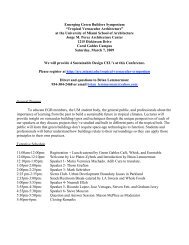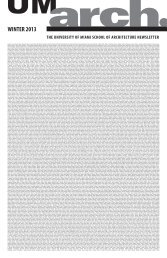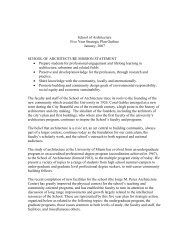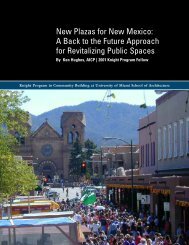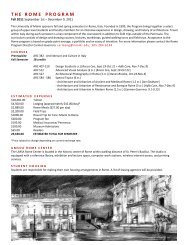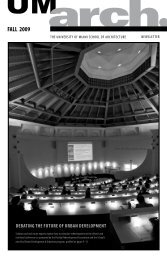Final Progress Advisory Panel Report - Knight Program in ...
Final Progress Advisory Panel Report - Knight Program in ...
Final Progress Advisory Panel Report - Knight Program in ...
Create successful ePaper yourself
Turn your PDF publications into a flip-book with our unique Google optimized e-Paper software.
• Conduct a full study of future DECC, Great Lakes<br />
Aquarium, and Bayfront Festival Park pedestrian<br />
traffic. That will be necessary to effectively develop a<br />
good design for improved bridg<strong>in</strong>g there. The potential<br />
expansion (if technically possible) of the Northwest<br />
Passage skywalk to the DECC should be part of<br />
that study.<br />
Option Two: Reclaim and upgrade I-35 as a multi-way, fourlane<br />
boulevard with at-grade cross<strong>in</strong>gs and more open<br />
circulation via “T” <strong>in</strong>tersections occurr<strong>in</strong>g more frequently<br />
than the current <strong>in</strong>terchanges. It is not necessary to remove<br />
the tunnels as they <strong>in</strong>clude substantial deck<strong>in</strong>g and<br />
access to lake views. The primary objective is substantial<br />
improvement to lake access with a tolerable reduction <strong>in</strong><br />
north-south capacity for through movements. The proposed<br />
approach could reallocate portions of the MPO’s<br />
$90 million <strong>in</strong> planned I-35 improvements for 2011-2030.<br />
Some of those funds could be used for the “Lakeside<br />
Boulevard upgrade.” It could beg<strong>in</strong> with restor<strong>in</strong>g the<br />
streetscape and frontages along Michigan Street and the<br />
Union Depot and rediscover<strong>in</strong>g the at-grade cross<strong>in</strong>gs<br />
to the Canal Park area. The design emphasis would add<br />
pedestrian, bicycle, and transit capability to the current<br />
motor vehicle-only mobility.<br />
Although the Lakeside Boulevard option would require<br />
major changes <strong>in</strong> policy, with careful exploration it could The need to connect the downtown and waterfront<br />
was an overwhelm<strong>in</strong>g panel recommendation. Three examples,<br />
emerge as a viable way to achieve more cost-effective, above, illustrate how Milwaukee (top image), Portland (middle<br />
image), and Cleveland (lower image) have done that.<br />
vibrant, and economically susta<strong>in</strong>able connectivity. If<br />
that option is selected, further deck<strong>in</strong>g projects would yield to much less expensive at-grade solutions<br />
for reach<strong>in</strong>g the lake and Canal Park area. The Congress for the New Urbanism offers a variety of good<br />
examples for convert<strong>in</strong>g highways to boulevards (www.cnu.org/highways) as a way to reclaim urbanism.<br />
New York City, Portland, San Francisco, and Milwaukee replaced elevated highways with boulevards and<br />
parks. Another source of <strong>in</strong>formation is the Urban Land Institute’s Top 10 Metro Highway Removal<br />
Projects < http://urbanland.uli.org/Articles/2011/September/SpivakTopTenHighway>.<br />
Over 50 years ago, Duluth leaders carefully studied the need to connect the downtown to a grow<strong>in</strong>g number<br />
of people <strong>in</strong> the suburbs and made the difficult decision to create an <strong>in</strong>novative new approach <strong>in</strong> I-35. We now<br />
know that decision disconnected the city’s core from a major asset, Lake Superior. Today, with new knowledge<br />
about how similar cities have revitalized themselves by br<strong>in</strong>g<strong>in</strong>g people back to live, work, and shop <strong>in</strong> urban<br />
52


